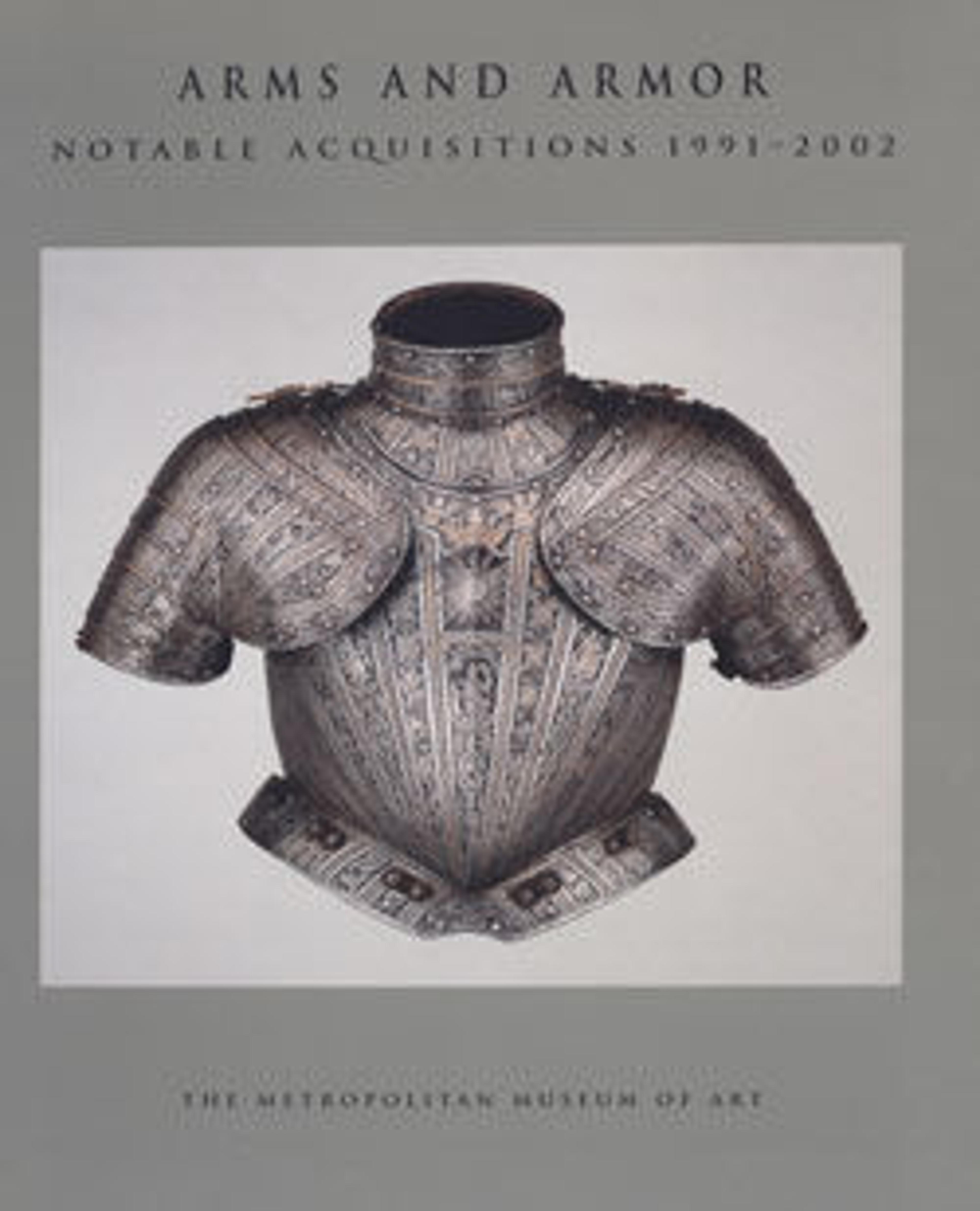Drawing of a Parade Helmet
Unlike preparatory designs intended to guide the goldsmith-embosser in decorating an armor, this drawing renders the likeness of a helmet already in existence. It undoubtedly records an example seen in a private aristocratic armory and is probably a study for use by the artist in a portrait of its owner, in which, following the conventions of the time, the helmet of the armored sitter was not worn but rested on a nearby table or ledge. The assured draftsmanship and delicate coloring attest to the skill of the artist, who may have been Venetian but otherwise remains unidentified. Beyond its visual appeal, the drawing is important as a record of an Italian Renaissance parade helmet embossed in high relief in the classicizing manner of Filippo Negroli of Milan. The helmet, which is probably a Milanese work of about 1540-50, still survives and is in the State Hermitage Museum. Saint Petersburg (Z.O. 6160). The helmet today lacks its hinged cheekpieces, one of which is carefully documented in this drawing
Artwork Details
- Title: Drawing of a Parade Helmet
- Date: second half 16th century
- Geography: probably Venice
- Culture: Italian, probably Venetian
- Medium: Colored chalk on paper
- Dimensions: 7 1/2 x 8 1/4 in. (19.1 x 20.9 cm)
- Classification: Works on Paper-Drawings
- Credit Line: Purchase, Bernice and Jerome Zwanger Gift, 1997
- Object Number: 1997.6
- Curatorial Department: Arms and Armor
More Artwork
Research Resources
The Met provides unparalleled resources for research and welcomes an international community of students and scholars. The Met's Open Access API is where creators and researchers can connect to the The Met collection. Open Access data and public domain images are available for unrestricted commercial and noncommercial use without permission or fee.
To request images under copyright and other restrictions, please use this Image Request form.
Feedback
We continue to research and examine historical and cultural context for objects in The Met collection. If you have comments or questions about this object record, please complete and submit this form. The Museum looks forward to receiving your comments.
